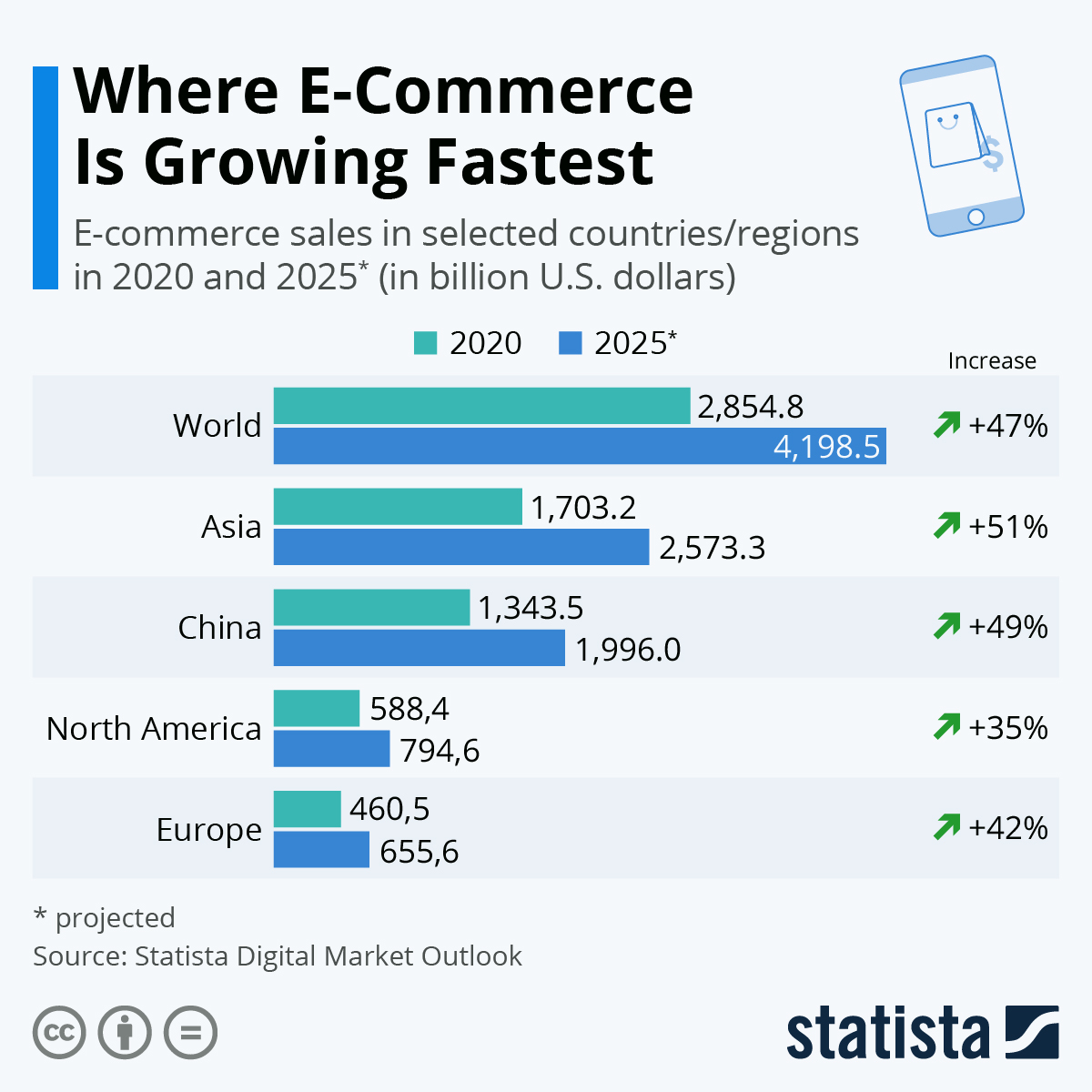China Leads the World in E-commerce
China Leads the World in E-commerce
 China is by far the biggest e-commerce market in the world as seen in figures from the Statista Digital Market Outlook.
China is by far the biggest e-commerce market in the world as seen in figures from the Statista Digital Market Outlook.
Last year, e-commerce sales in the country stood at US$1.3 trillion and that number is projected to increase to almost US$2 trillion by 2025. This would mean that in 4 years, almost every second e-commerce dollar could be spent in China.
Companies like Print-Rite have set up studios with staff successfully selling printer consumables products live on e-commerce platforms in China.
Revenues generated in China make up the majority of the Asian market. Yet, other markets on the continent are already growing at a faster rate than the Chinese market. Chinese growth remains above the world average, however.
In Europe and the U.S., e-commerce is expected to grow by 35 percent to 42 percent in five years, below the world average of 47 percent.

This chart shows e-commerce sales by country/world region in 2020 and 2025 (projected) as well as the percent increase in sales.
China has an e-commerce market share of 35% of the country’s total retail sales. The gigantic investments in China’s Belt and Road Initiative (BRI) project fuel this trend – by linking Central Asia, the Middle East, and Europe offline, more online businesses will follow.
Chinese consumers spend nearly five hours per day on their mobile devices, significantly more when compared with the global average of three hours per day.
The E-Commerce Players in China
With three times the size of the US market, the Chinese e-commerce market size is the largest commercial market in the world. The Middle Kingdom’s near 1.4 billion population, its traditional and innovative products together with the government’s censorship have created a prospering economy – online and offline. The largest online retailers:
- Tmall China by Alibaba Group: This is the third most visited website in the world and is a brand-driven B2C marketplace.
- JD.com: Jingdong (JD) is a B2C marketplace with in-house delivery and logistics. Tmall relies on its sellers to fulfill the supply chain. And JD.com formed a strategic partnership with Tencent (WeChat) to take on Alibaba
- Kaola by NetEase: This cross-border e-commerce player offers a large variety of goods, focusing on selling high-quality “Western” products to middle-class Chinese customers.
- Xiaohongshu (RED): The “Little Red Book” is a platform for young people’s lifestyle shopping. User-generated content (UGC) inspires this sharing community.
The exact market share among these online commerce platforms varies according to the source. Tmall is leading the e-commerce landscape with a market share of 50%-60%, JD.com follows with 15%-20%, Kaola, RED and others like WeChat (with their own WeChat store) divide the rest between them.
Related:
- Celebrating the Birth of Printing Consumables in China
- China Green Wall Demonstrates Sustainability Leadership
- China Foreign Trade Continues to Grow in June
- The Challenges of Remanufacturing in China
- New COVID-19 Outbreak Shuts Ports in China
- UK Imports More From China than Germany for First Time
- One More China Aftermarket Company Goes Public
Comment:
Please add your comments below about this news story, “China Leads the World in E-commerce.”





Leave a Comment
Want to join the discussion?Feel free to contribute!